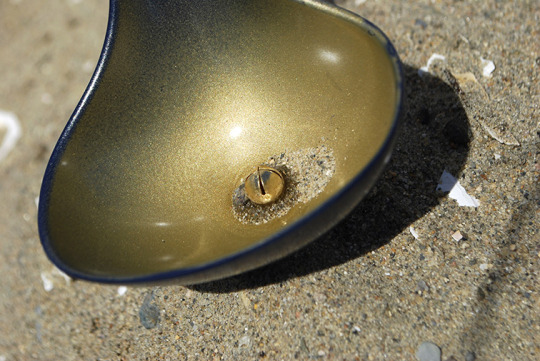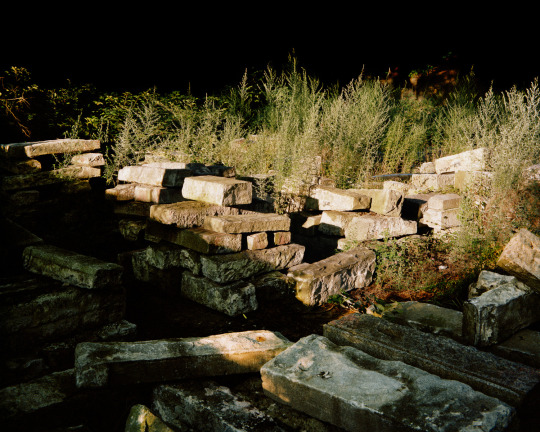Photo




Samantha Fields, Meditations on the Tide
Video, Meditation, Knitting, 2015
Location: Georges Island, North Picnic Area
A meditation; as the tide comes in the piece grows, one stitch per motion of the waves as the tide goes out the piece decreases one stitch per motion of the waves. Doing and an undoing. It is a simple poetic gesture, participating in the ever moving growing and shrinking edge of the shoreline the. Knitting as a reflection on the filling up and the emptying out of the harbor.
Video shot and edited by Sue Murad
0 notes
Photo

barge day, band photo, img courtesy of Amy Archambault
0 notes
Video
instagram
0 notes
Photo


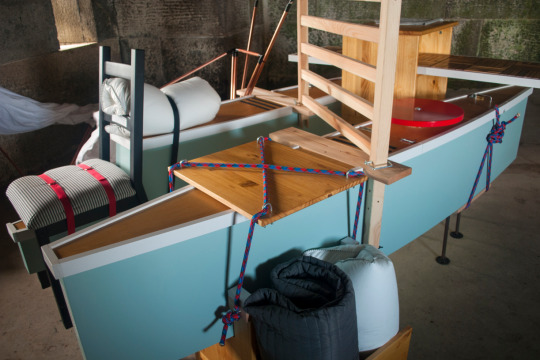

AMY ARCHAMBAULT, TRAVERSE
Mixed Media, 2015
Traverse emerges as a fusion amongst Archambault's most recent body of work exploring structures for play / activity inspired by childhood fabrications and contemporary “DIY” practices with the historical accounts of Confederate prisoners’ failed escape attempts from Georges Island circa 1860's.
"The men noticed huge musketry loopholes (about six feet high and three feet wide on interior narrowing down to a much smaller opening about seven inches wide on the exterior scarp wall). Alexander found that by turning his head he could squeeze through the opening... When they moved along the shore, they found a large pine board target, used for artillery practice, which had been pulled up on the shore. The two of them decided to put their clothes on the target and shove it ahead of them." ~ Schmidt, Jay. "The Escape." Fort Warren: New England's Most Historic Civil War Site. UBT, 2003. 76-78. Print.
Archambault is interested in the process by which an individual interprets place, specifically the physical property within, and spontaneously assembles these found belongings into a structure, device or vessel that exudes perceived functionality. Traverse is a collection of manipulated dormitory furnishings, construction materials, survival / camp accessories and fabricated vessel forms that coalesce as functional units (for escape) as well as abstracted gestures across the enclosure to evoke movement.
0 notes
Photo
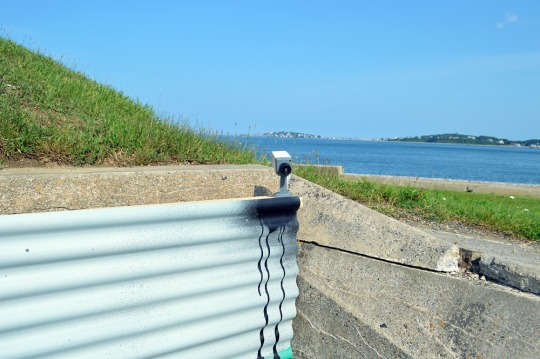
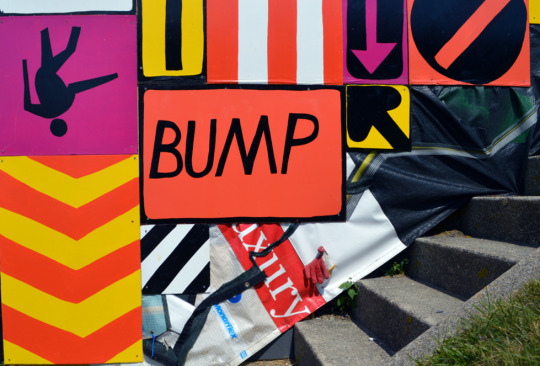






PAT FALCO, UNTITLED (COMING SOON)
"Coming Soon" balances the landscape and the existing architecture to recreate a Boston city block unstuck in time. Playing into Boston's massive gentrification, and romanticizing the city I remember as a kid -- the structure on the right captures a neighborhood fading left to right from a grittier version of the city to the modern neighborhoods popping up. The structure on the left is a maximalist collage of construction patterns and road signs that have invaded the city -- with a billboard placed on top reading "Coming Soon". Combining different eras of boston, the re-contextualization of a "natural space", and the history of the islands into a series of shops, signs, flyers, images, and objects -- it's an ode to the city and the island itself.
Collaborators: Elaine Bay, Kenji Nakayama, Kristin Texeira, & Randi Shandroski, & KEMS
0 notes
Photo




Monument to a Decommissioned Monument, Okay Mountain
Mixed Media, 2015
In Monument to a Decommissioned Monument the nine-member artist collective, Okay Mountain reflects on the way historic sites, and even history itself is repurposed. Responding to the revolving reincarnation of George’s Island, from military fort, to prison, to training grounds, to public park, Okay Mountain presents a shrouded heroic figure looking out toward Boston, suggesting a now-defunct past our possibly an as-yet-revealed future.
0 notes
Photo

Soundscapes, Cocek Brass Band & Urbanity Dance. photo: Meghan Ireland
0 notes
Photo

SCOTT LISTFIELD
The Island
18” x 34” oil on canvas
DEER ISLAND
The twelve egg-shaped structures at the entrance to Boston Harbor often provoke a similar question among first-time visitors: “What the heck are those things?” Well, they are the 130-foot-tall sludge digesters of the massive Deer Island Wastewater Treatment Plant. These funny looking digesters do the dirty, but essential job of breaking down the sludge from wastewater sent to the plant by forty-three communities in metropolitan Boston. Capable of discharging nearly one billion gallons a day, the Deer Island plant sends treated wastewater nearly ten miles offshore through a concrete tunnel, twenty- seven feet in diameter. Without these digesters—and the entire sewage treatment plant that opened in 2001—there wouldn’t be a clean harbor, a revitalized waterfront, or even, possibly, a national park area.
The plant is the centerpiece of the $4.5 billion environmental restoration of Boston Harbor that marks the first time Bostonians can point to Deer Island with pride, rather than shame. For centuries, Deer Island was the dismal home of interned Native Americans, quarantined immigrants, orphans, paupers, and criminals. Even today, the voices of those who suffered there seem to whisper in the wind.
0 notes
Photo
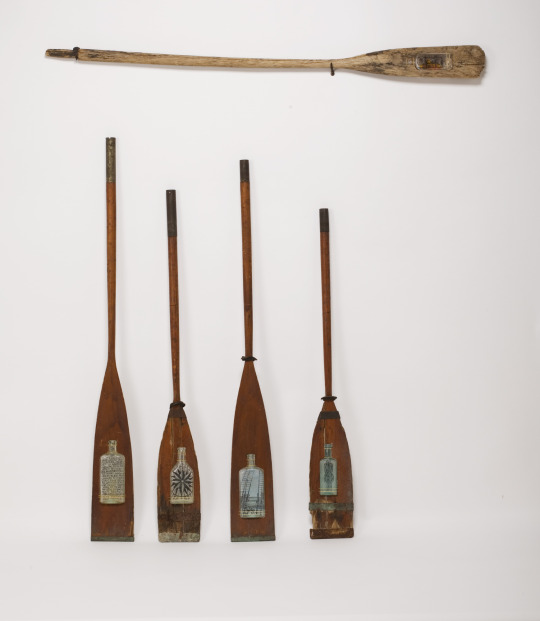

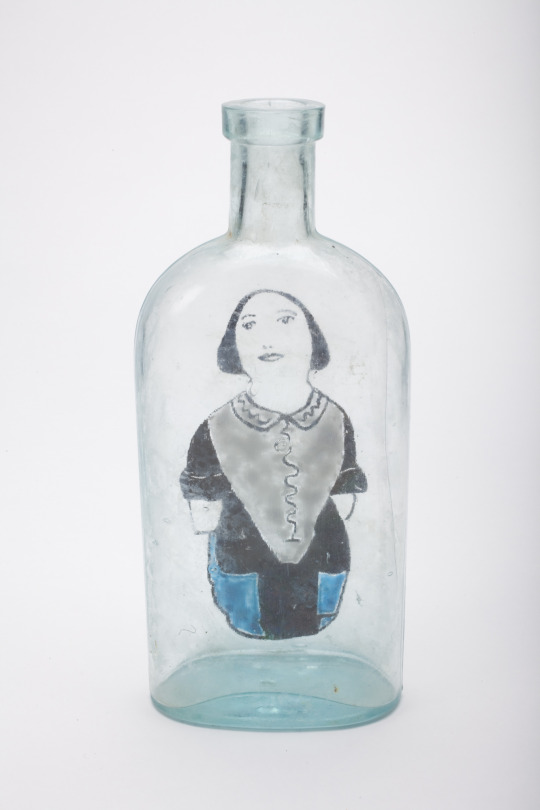
JESSICA STRAUS & ANTOINETTE WINTERS
The Beaching
60” x 60 “ x 2” oars, bottles
NUT ISLAND
In the latter half of the nineteenth century cavorting on the island gave way to a spookier pastime. Nearly a half century after Donald McKay and others had given rise to a proud shipbuilding history across the harbor, Nut Island was turned into a graveyard for a vast number of sailing vessels, including steamers and some of the Navy’s most powerful and historic ships from the Civil War. Thomas Butler & Co., a marine junk company, purchased the ships, towed them to Nut Island, and grounded them on the beach. Workers stripped them of their engines and other components, removed every piece of iron, brass, and copper, and sent the valuable material back to Boston for resale. Then, all that remained of these once-proud ships was set ablaze to salvage any remaining metal, with the devouring flames oftentimes illuminating the night sky, providing a spectacular sight for the crowds that lined the hills and shores for miles around.
0 notes
Photo

CASSANDRA LONG
Portrait of Julia Arthur
24” x 30” oil on canvas
CALF ISLAND
Calf Island was home to the palatial summer home of millionaire railroad financier Benjamin P. Cheney, Jr. and the beautiful Shakespearean stage actress Julia Arthur. Built in 1902 after the couple moved from Middle Brewster, their estate, “The Moorings,” would have been equally at home among the mansions of Newport. The Moorings dominated the crest of Calf Island, facing west toward Boston and commanding a broad sweep of the sea on all sides. The Boston Globe described it as the “first beauty touch to be given to one of the gaunt, inhospitable-looking Brewster islands.” The two-story home was gigantic—twenty rooms in all—and lavishly decorated. The furniture was made of solid oak, the ceilings and floors were made of hard pine, and photographs and paintings adorned the exquisite cypress- paneled walls. Outside, a stone veranda ran along three sides of the house.
The Cheneys planned to add a swimming pool and golf links to the estate, but those plans never came to fruition, and the couple’s carefree days on Calf Island came to an abrupt end in a stunning reversal of fortune. In 1917, Cheney, who had inherited $10 million, shocked the city by declaring bankruptcy. Three years later, the treasures of The Moorings were picked over by prospective buyers at auction. Julia Arthur, who had vowed never to act again when she moved to Calf Island, was forced to return to the stage.
0 notes
Video
instagram
0 notes
Photo
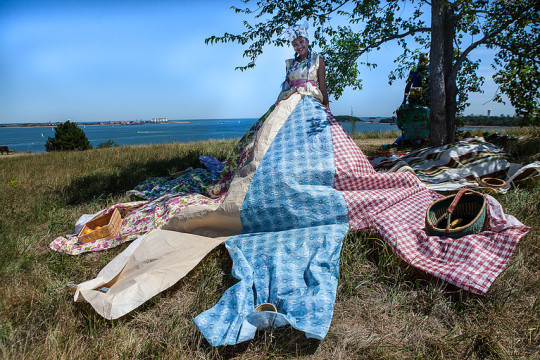
Gypsie Picnic, Jodie Lyn Key Chow, 2015, photo by Vela Phelan
0 notes


